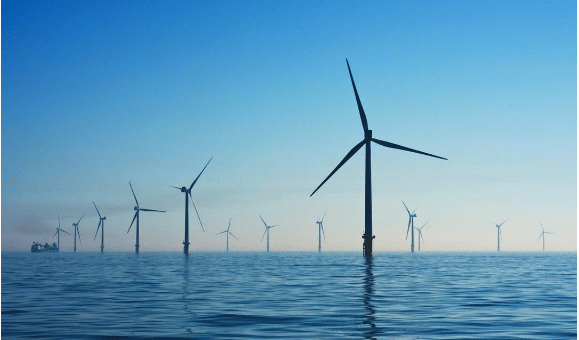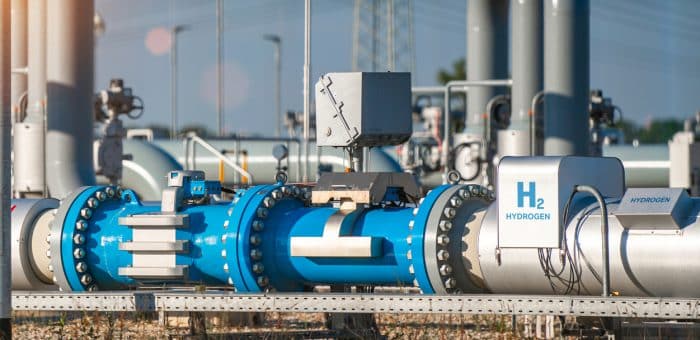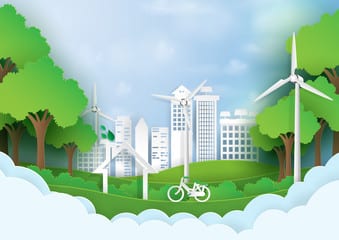With the increasingly drastic effects of climate change, many countries are investing in green transition initiatives. These initiatives reduce carbon emissions from industries, households, and transportation systems, thus creating a sustainable ecosystem. But what does it mean to be carbon neutral?
[carfirst]
Carbon neutrality means monitoring your lifestyle to reduce your carbon footprint by adopting energy-efficient practices. We are enthusiastic about adopting climate-positive strategies for a greener future at Power Wizard. Here are insights on the meaning of carbon neutrality and how to achieve it.
What “carbon neutral” really means
You may have come across the term “carbon neutral” with growing concern over unpredictable weather patterns. Greenhouse gas emissions from carbon fumes are a key contributor to global warming, significantly impacting the weather. Climate-related laws and policy changes, such as the Paris climate agreement, are being enacted worldwide to promote environmental conservation.
[carfirst]
Carbon emissions come from burning fossil fuels such as petroleum and coal to produce energy. Carbon dioxide gets released into the atmosphere when renewable sources of energy aren’t used. An overload of greenhouse gases causes an increase in environmental particulate matter. Carbon neutrality aims to reduce emissions to prevent premature deaths related to air pollution and climate change.
Why carbon neutrality matters
Carbon neutrality reduces the effects of greenhouse gases, which can be irreversible if left unchecked. Measuring your carbon footprint is the gold standard for beginning your climate-positive journey. This step keeps you aware of the amount of carbon you emit into the environment within a specific period.
[carfirst]
You can then choose carbon-offsetting activities to cut your carbon footprint. These activities include investing in green energy and enrolling in carbon-offset programs. Carbon neutrality helps keep our planet habitable in the following ways.
Reduces the impact of climate change
Carbon sinks cannot entirely absorb the environment’s high concentrations of greenhouse gases. The accumulation of greenhouse gases leads to climate change, threatening our planet. The rise in land temperature results in hotter days and heat waves, increasing the risk of heat-related illnesses and wildfires.
Temperature changes also influence rainfall patterns and can result in frequent storms. The increased rainfall may cause floods and landslides that leave extensive property damage. Some regions are at risk of increased periods of drought. This can reduce the amount of arable land available, increasing the risk of food insecurity worldwide.
[carfirst]
The polar ice sheets melt as the oceans absorb heat due to global warming. The melting ice raises the sea level, threatening islands and coastal locals’ well-being. Oceans also soak up carbon dioxide from the atmosphere, causing acidification, which endangers aquatic life and may contribute to a loss of biodiversity.
Once you adopt carbon-neutral practices, you reduce your carbon emissions and, by doing so, help curb global warming and reduce the risk of a climate crisis.
Saves money with renewable energy purchases
Due to the growing awareness of the effects of climate change, energy markets are going green. Government-backed initiatives in the U.S. are emerging to reduce dependence on nonrenewable sources of energy and encourage the use of clean energy.
[carfirst]
Solar and wind energy investors enjoy renewable energy incentives that significantly lower the production cost. Carbon neutrality requires you to switch to renewable energy.
The switch helps you save money on your energy bills and reduce your carbon footprint, making the world a better place to live in. You can use Power Wizard’s do-it-yourself shopping tool to find and enroll in a clean energy plan on the Texas electric power grid. You can also keep track of your electricity usage and sign up for a new plan with our versatile Enroll Me service.
How to work toward net-zero emissions
Carbon neutrality aims to reach net-zero emissions by absorbing large chunks of carbon dioxide from the atmosphere. Achieving net-zero emissions may seem complicated, but having a solid net-zero plan will help keep you on track. To reduce your carbon emissions further, you can also do the following.
Invest in energy efficiency at home
Investing in energy efficiency may be expensive initially, but it pays off. An energy-efficient home has lasting economic and environmental benefits. You spend less on your energy bills by reducing your consumption from nonrenewable sources.
[carfirst]
A decrease in nonrenewable energy consumption means that you also reduce your greenhouse gas emissions. You can also improve your family’s quality of life by providing a cleaner and safer environment. Making your home energy-efficient requires you to make green decisions, such as purchasing solar panels and energy-saving appliances.
Solar panels
Solar power is a great way to improve your home’s energy efficiency. The sun is a limitless source of renewable, green energy that you can easily harness using solar cells. When sunlight hits the solar panels, or their photovoltaic cells, it dislodges electrons from the semiconductor material, creating a flow of electricity.
[carfirst]
The efficiency of converting solar energy to electrical energy has greatly improved over the years with growing research and innovation in the energy sector. In this modern era, solar energy can meet your domestic lighting, heating, and air-conditioning demands.
Solar energy offers an excellent return on your investment as well. These benefits, and a growing push for environmental conservation, have contributed to the increased adoption of solar power systems.
The increased supply and demand have enabled solar power to compete favorably with other energy sources in the market. The U.S. energy market saw about 164 billion kilowatt-hours of solar energy production in 2021. Investing in solar energy can help you shrink your carbon footprint and meet your carbon-neutral goals.
Energy-efficient appliances
Electrical appliances and devices contribute significantly to energy consumption and waste in your home. Most home appliances have a rating that helps you make energy-informed decisions before purchasing them. Energy Star is a government-backed symbol for energy efficiency.
[carfirst]
Energy Star-rated products are guaranteed to consume less electricity than uncertified appliances, thus lowering your energy bill. The higher the Energy Star rating, the better the appliance’s energy efficiency.
A rating of 50 indicates a median energy performance, while any rating above 75 is a top performer. If you want to achieve carbon neutrality, consider household equipment with a high Energy Star rating.
Offset the carbon emissions you can’t simply reduce
If you can’t reduce all of your carbon emissions, you can attempt to implement carbon-negative practices. This process involves eco-friendly projects that contribute to greenhouse gas removal. There are various carbon-offset projects you can invest in to help the environment. The goal is to have negative net emissions of greenhouse gases.
Forest conservation and preservation is a popular carbon-offset project. Enrolling in a forestry program is a simple, tried, and tested way of capturing carbon dioxide. You can opt to plant trees where they initially didn’t exist through reforestation.
[carfirst]
Another way of participating in carbon offsets entails converting waste to energy. Household and commercial waste occupying landfills is a significant contributor to human-related emissions. Transforming the organic waste to biogas or biomethane allows you to create a sustainable energy source and lower your carbon emissions.
Alternatively, you can invest in carbon-offset credit permits. These tradable permits allow you to emit a certain quantity of carbon dioxide. One carbon credit enables you to release up to a ton of carbon dioxide. When you reach your limit, you pay extra for more credits. If you don’t use all of your credits, you can sell them to other companies that have exhausted theirs.
Join the carbon solution and reduce greenhouse gas emissions
You can contribute toward environmental conservation by reducing your carbon footprint. Achieving carbon neutrality through investments in solar energy and energy-efficient appliances, thus, helps reduce the impact of greenhouse gases on the climate. You can also use the tools and services at Power Wizard to save money through informed renewable energy purchases.







